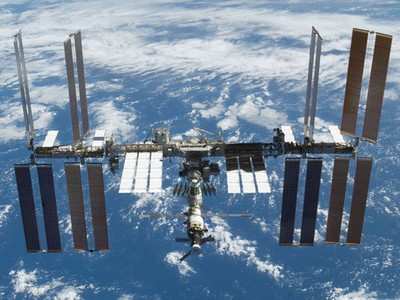Document Follows Review Of Collaboration Efforts
The heads of the International Space Station (ISS) agencies from
Canada, Europe, Japan, Russia and the United States met in Quebec
City, Canada, on March 1, 2012, to review the scientific,
technological, and social benefits being produced through their
collaboration, and to discuss plans for further broadening these
benefits by continuing to advance the human exploration of
space.

In reviewing the history of ISS development and the recent
transition to a productive research and applications phase, three
major areas of success were discussed: the historic engineering
achievements, the unprecedented international partnership, and the
ongoing progress being made through science. The heads noted that
human exploration of space continues to yield valuable benefits to
society and is strengthening partnerships among space-faring
nations.
The heads also recognized the new opportunities for discovery
made possible by maximizing the research capabilities of the ISS,
as well as the growth in commercial endeavors and positive
educational impact brought about by this permanent human presence
in space. Biology, biotechnology, and human physiology research are
producing new insights into human health on Earth with the
development of promising applications supporting future medical
therapies. Also a wide range of fluids and materials research
yields a promising way for better and smarter materials and
production processes on Earth. Observations captured from the ISS
in the fields of x-ray astronomy, high-energy particle physics, and
Earth remote sensing hint at discoveries to come as the ISS is
increasingly used as a platform for the installation and operation
of a wide variety of instruments supporting Earth and Space
Sciences. Technology demonstrations in environmental control,
robotic servicing, and advanced telecommunications and
teleoperations are making it possible to eventually further extend
human presence in space and continue to broaden improvements to the
quality of life on Earth.
Recognizing the inspirational nature of the ISS as a
human-tended outpost in space, the agency leaders applauded its
strong role in motivating young people around the world to learn
about science, technology, engineering and mathematics. More than
40 million students have participated in human spaceflight to date
through communications downlinks and interactive experiments with
station crew members.
Highlighting the continued growth in the international user
community, the first biannual "International Space Station
Utilization Statistics" was released. The partnership also
published "International Space Station Benefits for Humanity,"
illustrating specific successful humanitarian accomplishments in
education, human health, Earth observation and disaster response
that will improve the lives of many throughout the world.
The ISS partnership began considering long-range opportunities
to further advance human space exploration, so benefits from the
ISS program will continue to grow through future exploration
missions. In the near term, the heads of agencies committed to
increase use of the ISS as a test bed in space for the
demonstration of critical technologies and the mitigation of human
health risks for exploration as a joint effort. For the long-term,
they discussed opportunities to use the ISS as a foundation for the
development of future exploration capabilities. The ISS partnership
has created a global research facility in space that is
unprecedented in capability and unique in human history. The heads
of agency re-confirmed the importance of using the facility to
benefit society today and provide a technological basis for
continued human exploration of space in the future.
 ANN's Daily Aero-Term (04.14.24): Maximum Authorized Altitude
ANN's Daily Aero-Term (04.14.24): Maximum Authorized Altitude ANN's Daily Aero-Linx (04.14.24)
ANN's Daily Aero-Linx (04.14.24) Classic Aero-TV: 'We're Surviving'-- Kyle Franklin Describes Airshow Life 2013
Classic Aero-TV: 'We're Surviving'-- Kyle Franklin Describes Airshow Life 2013 Aero-News: Quote of the Day (04.14.24)
Aero-News: Quote of the Day (04.14.24) Airborne 04.09.24: SnF24!, Piper-DeltaHawk!, Fisher Update, Junkers
Airborne 04.09.24: SnF24!, Piper-DeltaHawk!, Fisher Update, Junkers



